Understanding ISO Standards Certification: A Comprehensive Guide
Introduction
In today’s globalized business environment, organizations strive to meet high standards of quality, safety, and efficiency to remain competitive. ISO (International Organization for Standardization) standards certification provides a framework for achieving these goals. ISO is an independent, non-governmental international organization that develops standards to ensure quality, safety, and efficiency across various industries. These standards, recognized worldwide, help businesses improve processes, enhance customer satisfaction, and gain a competitive edge. ISO certification demonstrates an organization’s commitment to excellence and compliance with globally accepted benchmarks. This article explores the significance of ISO standards certification, delving into its benefits, types, certification process, and challenges, offering a comprehensive understanding for businesses and individuals alike.
1. The Importance of ISO Standards Certification
certificacion normas iso (ISO standards certification) serves as a hallmark of quality and reliability. It assures customers, partners, and stakeholders that an organization adheres to internationally recognized standards. One primary reason for pursuing ISO certification is to enhance credibility. For instance, ISO 9001, the standard for quality management systems, signals to clients that a company prioritizes consistent quality in its products or services. This certification can open doors to new markets, as many industries and governments require ISO compliance for contracts or partnerships.
Moreover, ISO certification fosters operational efficiency. By implementing standardized processes, organizations can reduce waste, streamline operations, and improve productivity. For example, ISO 14001, focused on environmental management, helps companies minimize their environmental footprint while optimizing resource use. Additionally, certification can boost employee morale, as clear standards provide a structured work environment, fostering accountability and continuous improvement. In a competitive marketplace, ISO certification differentiates organizations, building trust and enhancing brand reputation.
2. Types of ISO Standards
ISO has developed over 24,000 standards, covering diverse sectors such as manufacturing, healthcare, IT, and environmental management. Some of the most widely adopted ISO standards include:
-
ISO 9001 (Quality Management): This standard focuses on ensuring consistent quality in products and services. It emphasizes customer satisfaction, process efficiency, and continuous improvement. Businesses across industries, from manufacturing to hospitality, pursue ISO 9001 to demonstrate their commitment to quality.
-
ISO 14001 (Environmental Management): Aimed at reducing environmental impact, ISO 14001 helps organizations manage resources responsibly, comply with regulations, and adopt sustainable practices. It is particularly relevant for industries with significant environmental footprints, such as construction or energy.
-
ISO 27001 (Information Security Management): This standard addresses the protection of sensitive information. It is critical for organizations handling data, such as IT companies or financial institutions, ensuring robust cybersecurity measures and risk management.
-
ISO 45001 (Occupational Health and Safety): Focused on workplace safety, ISO 45001 helps organizations prevent work-related injuries and illnesses. It is essential for industries like manufacturing or construction, where safety risks are high.
These standards, among others, cater to specific organizational needs, allowing businesses to select certifications that align with their goals and industry requirements.
3. The ISO Certification Process
Achieving ISO certification involves a structured process that requires commitment and resources. The journey typically includes the following steps:
-
Gap Analysis: Organizations begin by assessing their current processes against the requirements of the desired ISO standard. This gap analysis identifies areas needing improvement to meet compliance.
-
Implementation: The organization develops and implements processes to align with ISO standards. This may involve training employees, updating documentation, or redesigning workflows. For example, achieving ISO 9001 may require establishing quality control measures, while ISO 14001 may involve adopting eco-friendly practices.
-
Internal Audit: Before seeking external certification, the organization conducts an internal audit to ensure compliance with the standard. This step helps identify any remaining gaps or non-conformities.
-
Certification Audit: An accredited certification body conducts an external audit, typically in two stages. Stage one involves a review of documentation, while stage two assesses the implementation of processes. If the organization meets the standard’s requirements, it receives certification.
-
Maintenance and Surveillance: ISO certification is not a one-time achievement. Organizations must undergo regular surveillance audits (usually annually) to maintain certification, ensuring continuous compliance and improvement.
The process can take several months, depending on the organization’s size, complexity, and readiness. Engaging with experienced consultants or certification bodies can streamline the journey.
4. Challenges of ISO Certification
While ISO certification offers numerous benefits, it also presents challenges. One significant hurdle is the cost, which includes consultant fees, training, audits, and ongoing maintenance. Small and medium-sized enterprises (SMEs) may find these expenses daunting, though the long-term benefits often outweigh the initial investment.
Another challenge is the time and effort required for implementation. Employees must adapt to new processes, which can disrupt operations temporarily. Resistance to change is common, particularly in organizations with entrenched practices. Effective leadership and clear communication are crucial to overcoming this barrier.
Maintaining compliance also demands ongoing commitment. Organizations must continuously monitor and improve their processes to meet evolving standards and pass surveillance audits. Additionally, selecting the right certification body is critical, as inexperienced auditors may lead to delays or misaligned expectations.
Despite these challenges, organizations can mitigate risks by planning thoroughly, allocating resources wisely, and fostering a culture of continuous improvement. The rewards of certification, such as enhanced credibility and efficiency, make the effort worthwhile.
Conclusion
ISO standards certification is a powerful tool for organizations seeking to elevate their performance, credibility, and market presence. By adhering to globally recognized standards, businesses can improve processes, ensure compliance, and build trust with stakeholders. The importance of certification lies in its ability to enhance quality, sustainability, and safety, while various ISO standards cater to specific industry needs. Though the certification process is rigorous and challenges like cost and resistance to change may arise, the benefits of improved efficiency, market access, and customer trust are undeniable. For organizations aiming to thrive in a competitive world, pursuing ISO certification is a strategic investment in long-term success. By committing to these standards, businesses not only meet industry expectations but also contribute to a global culture of excellence and responsibility.
- Vibnix Blog
- Politics
- News
- Liberia News
- Entertainment
- Technology
- Education
- Art
- Causes
- Crafts
- Dance
- Drinks
- Film
- Fitness
- Food
- Games
- Gardening
- Health
- Home
- Literature
- Music
- Networking
- Other
- Party
- Religion
- Shopping
- Sports
- Theater
- Wellness


